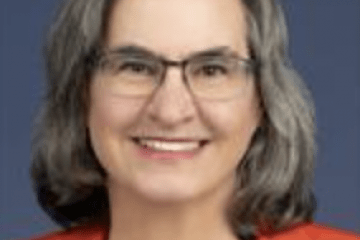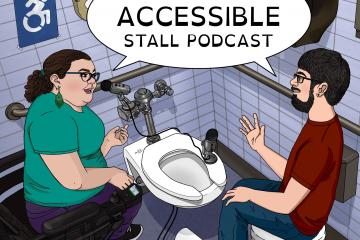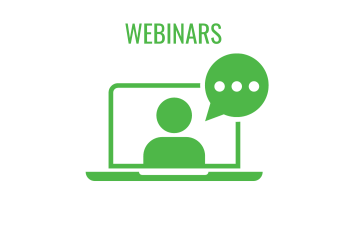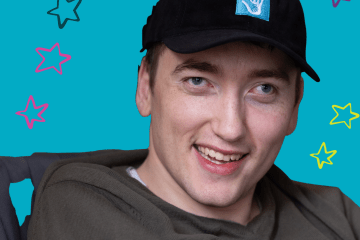Mental Wellness Among Adults with Cerebral Palsy
“As early as second grade, I had, what I now recognize to be a panic attack over my second-grade school play,” Kathleen Downes, 28, a social worker, recalls. “It didn’t occur to me at that age that other seven-year-old were not having panic attacks about their school play. You know, at the time, I just kind of passed it off as like, I was shy, whatever, but looking back, red flag.”
Downes lives with quadriplegic cerebral palsy and Tarlov cyst disease, a spinal condition that forms a sack of fluid around her nerve root. As a result of the spinal disorder, she also lives with chronic nerve pain.
But that’s not all.
During middle school, she entered a new school, which also meant she’d get a new support team. But her paraprofessional aide was often missing in action, especially when Downes had to use the bathroom. So, she’d have to resort to going to the school nurse whenever she had to relieve herself. Already feeling embarrassed about the whole situation, teenaged Downes was then faced with an uncooperative nurse who made her feel ashamed about needing help.
“So, I started very systematically fluid-depriving myself, and I knew that it wasn’t a healthy or a safe thing to do,” she explains. “But I saw it as kind of survival mode at the time. I started to get so used to being chronically dehydrated that I didn’t even feel thirsty anymore. And I trained myself not to pee for like 12 or 13 hours. And I think that many people with CP probably do that when they don’t have someone help them. My whole junior high and early high school experience very fraught with it, and it was depressing being dependent on these people that I was either you annoyed, or you were afraid of.”
By the time she was gearing up to go to college, her anxiety and subsequent panic attacks were out of control. Her doctors finally put her on anti-anxiety medication, and years later now, she’s talking to a mental health professional.
Although the obstacles she must navigate as a result of having cerebral palsy – such as finding long-term care and moving through a physically inaccessible world contributes to her mental health issues, that’s only a fraction of it. Downes, and anyone else with a disability, also have to handle the “normal life” stressors: relationships, career, the uncertainty of life, etc.
THE “FORGOTTEN” POPULATION
The CDC reports that adults with disabilities experience frequent mental health problems almost five times more often than adults without disabilities. Yet, the mental wellbeing of those living with disabilities – physical disabilities in particular – is rarely discussed, if at all. This also extends to the CP community.
In a 2019 study in the Annals of Internal Medicine, “Compared with adults without CP, those with CP have an elevated prevalence of mental health disorders, some of which may be more pronounced in patients with comorbid neurodevelopmental disorders.”
People with cerebral palsy fall through the cracks when they reach adulthood. As children with cerebral palsy, they receive undivided attention from medical professions and rehabilitation therapists. But as they age out of pediatric care, adults with cerebral palsy don’t receive that caliber of specialized attention or care.
Jocelyn Cohen, 39, vice president of communications and engagement at the Cerebral Palsy Alliance Research Foundation, lives with spastic diplegic cerebral palsy. She can attest to the various incidents of childhood trauma – specifically from being in and out of hospitals for multiple surgeries – that have contributed to her mental wellbeing today.
“This can all affect mental health for people with cerebral palsy, even though it’s not explicitly related to cerebral palsy itself. To be frank, what many of us go through as children, is trauma. Multiple surgeries can be traumatic. Going under anesthesia is traumatic, recovery is traumatic.”
Cohen continues “And if you have no one to talk to about this — no one to name your feelings with — it can potentially compound itself down the road. People with cerebral palsy should have someone to talk with about these things and whatever else they experience, including bullying, shame around being unable to achieve or maintain a certain mobility standard, inaccessibility of the world, and exclusion because of it.” With no outlet or even language to express those feelings, people with cerebral palsy pile all the negativity up inside, which follows them long into adulthood.
“Mental health is not talked about nearly enough in the cerebral palsy community,” Cohen claims. “Mental health care should be included at the outset, as part of discussions around physical, occupational, and speech therapies. I’ve seen studies on cerebral palsy’s effect on caregiver mental health — and that is important. Caregivers are part of the cerebral palsy community, too. It’s an interdependent one. There’s not enough about the nuance around how having cerebral palsy affects mental health.”
THE LACK OF AN INTERSECTIONAL APPROACH
For men with cerebral palsy, expressing these insurmountable feelings can feel even more impossible. We already live in a society that harshly stigmatizes men for being emotional or perpetuates the idea that men shouldn’t show any signs of weakness, both physical and psychological.
Kyle Khachudurian, 29, is an advocacy and communication specialist at The Arc of Kings County in Seattle. His cerebral palsy affects just his lower body. He says, “if you’re physically disabled, you don’t want to deal with the stigma of mental health.”
Khachudurian has seen noticeable changes in his moods and mentality as he’s gotten older. For example, luring deadlines at work give him the most amount of anxiety. And over the past year, in the middle of a global pandemic, he moved cross country to start a new job – stressful under the best circumstances, but seemingly insurmountable during this time.
“I feel like if I talk to someone – like a non-disabled friend – about how my mental health is affected by the world around me,” Khachudurian begins, “they will automatically assume that CP is the reason or at least like a big part of the reason that I’m stressed out or depressed or whatever. No, that’s not it. I’m sure that certain stressors in my life are exacerbated by having CP. But CP – I don’t think – is the cause of anything. And I don’t think that a lot of people understand that.”
However, even as a man with cerebral palsy, Khachudurian realizes the privilege he has of being able to talk about these issues since he’s white-passing and has a mild form of cerebral palsy.
For men of color, such privilege doesn’t extend to them. Compared with non-Hispanic whites, Black Americans with mental illnesses have lower rates of seeking mental health services, including prescription medications and outpatient services. But they are more likely to be subjected to inpatient services, usually being admitted to a psychiatric ward against their will. Even worse, Black men experiencing psychosis are much more likely to be imprisoned than people of any other race.
D’Arcee Charington Neal is a 35-year-old doctorate student at Ohio State University. He lives with diplegic spastic cerebral palsy and asthma. “I was a very depressed child,” he recalls. “And being disabled was a large part of it. But what was worse was being Black on top of it because the bottom line is that you don’t ever see black disabled people.”
Since Neal was as young as seven years old, people around him assumed that he acquired his disability due to being shot by a gun. They thought he was involved in gang violence or a robbery that ended up with him being shot in the spine that paralyzed him. He would see white peers using wheelchairs being offered the benefit of the doubt, that they have some form of a disability or illness.
Although Neal has never been diagnosed with a mental health issue like depression or anxiety, he talks through his emotions and everyday happenings with a therapist who’s also a Black, queer man. Neal mentions that there is no one direct source for his stress or emotional turbulence. But it’s a result of all the cumulative systems of oppression he experiences as a Black queer man with a disability.
He explains that throughout his life, people have made one too many wrongful assumptions about him and his life based on his appearances and took pity on him. “But actually, my life is amazing,” Neal exclaims. “But those people wouldn’t know that because they’re making ridiculous assumptions about your life based on how you look.”
A CALL FOR CHANGE
Neal desperately waits for the day when people with disabilities can be unapologetically disabled and still have people respect them. In a time when all body size and shape is celebrated and different genders and sexualities are respected, there still hasn’t been such revolution for folks with disabilities, even the media lacks an authentic representation of people living and thriving with disabilities.
Until that day comes, Neal says, “I’m not going to change my body. I have nothing to change.”
Cohen strongly believes that physical health and mental health are inherently connected. “Mental health deserves as much attention as physical health for everyone, including people with cerebral palsy. It should not be overlooked.”
Medical professionals and therapists who see patients with cerebral palsy must incorporate mental wellness in their approach. Only recently have medicine and research have become aware of how psychological and physical health are closely intertwined. Cerebral palsy specialists must also take this interdisciplinary approach.
“Don’t jump to the conclusion that we must hate being disabled,” Downes advises, “or that it’s completely miserable or anything. Like everything in life, it’s a very nuanced experience. It can be good and bad and hurting easy at the same time. So, I would encourage someone to be attuned to worries in situations that are unique to a disability, but don’t jump to a negative conclusion about our overall quality of life or assume that it must be completely horrible to be disabled.”
The world has many systems of oppression that make it inaccessible, in more than one realm, for people with disabilities. Actual change will happen if and only if society shifts its thought patterns on the disability community. From making physical spaces completely accessible to providing folks with disabilities equitable access to life’s opportunities, allies need to be educated and advocate for a total system reset. Truth be told, the human-made world was not created with people with disabilities in mind. Still, now there’s nothing stopping society from doing a complete redesign – from changing their perceptions to implementing universal designs never to deny physical access to anyone.
"Mental health is not talked about nearly enough in the cerebral palsy community. Mental health care should be included at the outset, as part of discussions around physical, occupational, and speech therapies. There’s not enough about the nuance around how having cerebral palsy affects mental health.”





